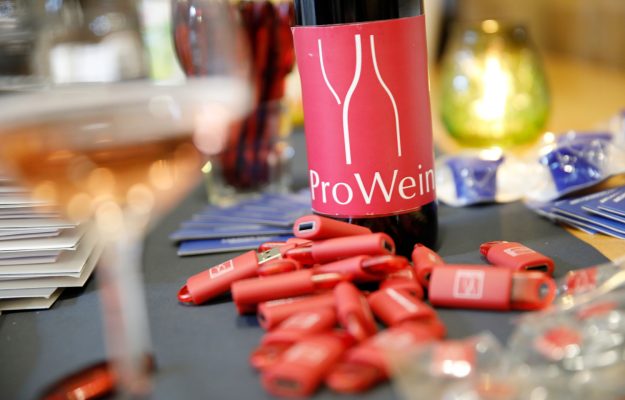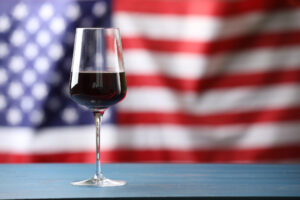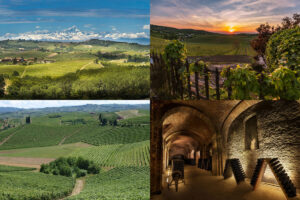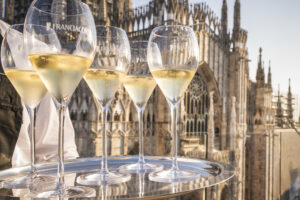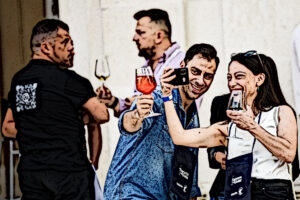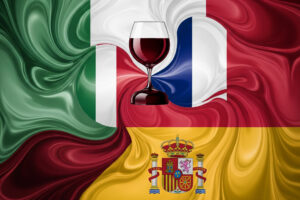Germany in the lead, with 1.1 billion euros of Italian wine imported in 2021, and then the United Kingdom, with 742 million, and then France, the Netherlands, Sweden and Denmark, Belgium, Poland, Austria, Finland, Romania, Luxembourg and so on: the Northern European markets, for Italian wineries, represented a turnover of more than 3 billion euros in 2021, out of the 7.2 of total exports. With 2022, at least looking at January’s Istat data, off to a growing start everywhere except the United Kingdom. Markets that will be the main target of the more than 1,400 Italian wineries (by far the largest national representation) protagonists at Prowein 2022, which, after stopping in the two years of the pandemic, returns to Dusseldorf from May 15 to 17, with its international and exquisitely commercial vocation, with more than 5,500 exhibitors from 60 countries (including Finland, Hong Kong, Lithuania and Singapore).
“No other event in the world offers such a comprehensive range of products. Covid-19 cannot slow us down”, says Michael Degen, Messe Düsseldorf executive director. Of course, among many focuses and tastings, there will be no shortage of insights into issues and trends the industry is coming to terms with. From the impact to the management of climate change via the phenomenon of “low or zero alcohol” wine, which will be explored in depth at several times in the “Trend Hour Tastings”, to wine tourism, a phenomenon that, according to a study by Dwi and Hochschule Geisenheim, generated global sales of 29.9 billion euros in 2019, the last pre-covid year. And, in anticipation of a major restart of global wine tourism, the special exhibition “Caravaning”, which was born out of the collaboration between ProWein and the Caravan Salon in Dusseldorf, will also be on stage. Prominent among the major international tastings will be, as always, that of the Union des Grands Crus of Bordeaux, with more than 100 chateaux that will put the 2019 vintage in the spotlight, and the space dedicated to French bubbles, with the “Champagne Lounge”, but also with more than 120 Maisons present at the fair. Of course focus also on organic, “Organic World” with the international associations Biodyvin (France), Bioland and Consorzio Vignaioli del Trentino (Italy), Demeter, Ecovin and Vignerons de Nature (France) in addition to individual exhibitors mainly from Italy, Greece, France and Spain. And at a time when the issue of logistics and packaging for the wine industry are central, amid rising costs and shortages of raw materials and transportation services, the “Packaging & Design” space becomes decidedly interesting, where innovative solutions for the wine trade will also be presented. And signaling a trend that sees craft beers, ciders and other beverages increasingly competing with the nectar of Bacchus, “Same but different” also returns, the space where the key concepts will be craftsmanship and regionality of products.
But, of course, wine is the great protagonist, and Italian wine in particular, with a large presence, the largest (well ahead of France, second with 1,100 exhibitors), capable of expressing the variety of territories (from Alto Adige to Sicily) and companies, from small griffes to more structured realities, to large cooperatives. With names ranging from Allegrini to Altesino, from Ambrogio and Giovanni Folonari Tenute to Angelini Wines & Estates, from Argiolas to Arnaldo Caprai, from Poliziano to Secondo Marco, from Zaccagnini to Dal Forno, from Berlucchi to Gini, from Sandrone Luciano to Zymè, from Planeta Baglio del Cristo di Campobello, from Banfi to Borgogno, from Bortolomiol to Cantina di Soave, from Toblino to Tollo, from Vignaioli del Morellino di Scansano to Bava, from Marchesi di Barolo to Lunae Bosoni, from Settesoli to Carpenè Malvolti, from Carpineto to Sartori, from Zonin 1821 to Emilia Wines, from Casanova di Neri to Mezzi, from Caviro to Cavit, from Ruffino to Tasca d’Almerita, from Cottanera to Cusumano, from Di Majo Norante, from Donnafugata to Cecchi, from Famiglia Cotarella to Fantini Group, from Ferrari to Feudi di San Gregorio, from Fontanafredda to Fontodi, Gianni Gagliardo to Graci, from Gruppo Italiano Vini - Giv to San Michele Appiano, from Terlano to Abbazia di Novacella, from Librandi to Lungarotti, from Antinori to Frescobaldi, from Masciarelli to Masi, from Masottina to Michele Chiarlo, from Montelvini to Ornellaia and Masseto, from Pasqua Vigneti e Cantine to Perla del Garda, from Piccini 1882 to Pio Cesare, from Quintodecimo to Rocca delle Macìe, from Ruggeri to Salcheto, from Santa Margherita to Schenk Italia, from Tedeschi to San Felice, from Speri to Tenuta di Bibbiano, from Fanti to Tenuta San Guido, from Terra Moretti to Tommasi Family Estates, from Torrevento to Tua Rita, from Umani Ronchi to Umberto Cesari, from Val d’Oca to Velenosi, from Venica & Venica to Villa Sandi, from Zenato to Zorzettig. Passing through consortia, such as those for Barbera d’Asti, Brunello di Montalcino, Nobile di Montepulciano, Vernaccia di San Gimignano, Prosecco Doc, Valpolicella, Bolgheri, Garda, Franciacorta, Lambrusco, Conegliano and Valdobbiadene Prosecco Superiore Docg, Doc delle Venezie, Lugana, Morellino di Scansano, Primitivo di Manduria, Maremma, Valtellina, Montecucco, Montefalco, Soave, Chianti, Chianti Classico, Colli Euganei, Vini d’Abruzzo, and Istituto Marchigiano Vini, and for large business groupings, from the Istituto del Vino Italiano di qualità Grandi Marchi (which brings together 18 of the most prestigious names in Italian wine, Alois Lageder, Folonari Tenute, Antinori, Argiolas, Ca’ del Bosco, Carpenè Malvolti, Col d’Orcia, Donnafugata, Jermann, Lungarotti, Masi, Mastroberardino, Michele Chiarlo, Pio Cesare, Rivera, Tasca d’Almerita, Tenuta San Guido and Umani Ronchi) to Italia del Vino Consorzio (which brings together 22 entities such as Banfi, Angelini Wine & Estates, Bisol 1542, Ca Maiol, Cantina Mesa, Cantine Lunae, Casa Vinicola Sartori, Di Majo Norante, Drei Donà, Duca di Salaparuta, Ferrari Fratelli Lunelli, Gruppo Italiano Vini, Librandi Antonio and Nicodemo, Marchesi di Barolo, Medici Ermete & Figli, Ronchi di Manzano & C. , Santa Margherita Gruppo Vinicolo, Terre de La Custodia, Terredora di Paolo,Torrevento, Zaccagnini and Zonin1821) to Iswa - Italian Signature Wine Academy (with Allegrini, Arnaldo Caprai, Bellavista, Feudi di San Gregorio, Fontanafredda, Frescobaldi, Masciarelli, Planeta and Villa Sandi), to name a few.
Not forgetting the Primum Familiae Vini, which brings together the 12 oldest and most important wine-producing families in the world (Marchesi Antinori, Baron Philippe de Rothschild, Joseph Drouhin, Domaine Clarence Dillon, Egon Müller Scharzhof, Famille Hugel, Pol Roger, Famille Perrin, Symington Family Estates, Tenuta San Guido, Familia Torres, and Vega Sicilia).
Copyright © 2000/2025
Contatti: info@winenews.it
Seguici anche su Twitter: @WineNewsIt
Seguici anche su Facebook: @winenewsit
Questo articolo è tratto dall'archivio di WineNews - Tutti i diritti riservati - Copyright © 2000/2025










